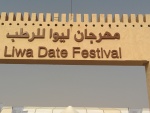The rest of 2018 passed in a flurry of unexpected changes in our life taking us back to our hometown of Vancouver and a different lifestyle. Still, I want to finish writing about the second half of our experiences with the Ugandan mountain gorillas. Since the memories have become more distant I will let the photos do the talking.
Our first day seeing the Oruzogo family of gorillas started with a short drive from the Bakiga Lodge to the ranger station early in the morning. We were welcomed and instructed of the “to dos and to do not around gorillas” by a group of guides and guards and assigned to another couple from Sweden to be our small group for the day. The lodge had looked after food, snacks and water for our hike which could take up to 8 hours. And with another half hour drive from the ranger station we ended up in a small village where we were able to hire our porters for 15 US per person and start our adventure. We each chose to have our own porter for our backpacks and to help us with difficult terrain if that was needed. And boy were we glad we had the help! Our 45 min hike to the 18 animal group sounded short enough, but entailed very steep and muddy paths through a tea plantation and the rain forest. As the entire hike happened above 2,000 m elevation our ability to cope with the climbing and the thin air was severely challenged and the helping hand when climbing up or down the many muddy 50 cm “steps” much appreciated. All the huffing and puffing was definitely worth it when we saw “our family” relaxing under the trees and in the deep grass. This group was one of the largest in Uganda and was led by a silver-back male whose brothers stayed with the family as well. Making it unique with 4 silver-backs around. While we stood among the trees and marveled at the family resting and the small ones playing the gorillas eventually were done and started moving past us. One silver-back stepping so close to my husband that he could have touched him and was asked by our rangers to move back a little.
The entire day was finished at about 11 am when we were driven back to the ranger station for our certificate of participation. We were so elated that we managed to finish this hike without having to call in the “Ugandan helicopter”, a service which transports an injured or incapacitated hiker back to civilization. We were able to see one in action on our next day at the ranger station in Buhoma when a lady with knee problems had hired it in advance for the entire hike: it was a car seat (with seat belt I think) mounted on a sturdy platform with four arms to be carried by four to six strong people.
After our breathlessness at the high elevation our drive to Buhoma was relaxing and the acclimatization to an elevation around 1,550 m in the Haven lodge was easy. Still, after the very breathtaking hiking experience in the Ruhija area I was a little concerned about the longer hike in this part of the forest to find the Mubare family group. On this tour we were a larger group of 9 visitors with one ranger and two armed guards. The guards, we were told, were necessary to protect us from potentially aggressive elephants which occasionally can be encountered. We never saw one and thought that they may as well have been for protection from armed poachers or smugglers which cross the border from the Democratic Republic of Congo that runs right through the middle of the National Park.
As on our first day we hired a porter each while most other visitors chose to carry their own luggage. Tourists in this group included an older couple which despite the easy hike ended up needing some assistance from our porters – as they had chosen not to hire one – to help them after a fall and through some trickier spots of the trail. Being part of a larger group made for more challenging viewing of the gorillas as more than once other members just thrust their cameras or bodies right in front of our line of sight to take their best photo. So, we held back a little and were rewarded with our most amazing experience of this adventure: a four year-old gorilla girl decided she wanted to cross to another spot and walked right between my husband and me (trying to stand as still as possible) brushing along my pant leg and slapping my husband playfully on his thigh. What a badge of honour to be touched by a gorilla in the wild. Admittedly, I would have been scared to death if this would have been an adult female or the silver-back.
Our day-long car drive back impressed us again with its beautiful views of the agricultural country-side and the many colourful storefronts along the way.
Motorcycles, named border-border, as they are used to transport anything and anyone from border to border or just the next village are everywhere.
We spent our last night at the same hotel, 2 friends Beach hotel, in Entebbe and enjoyed a delicious dinner on the beach along Lake Victoria. Having seen just such a small part of the country we hope we can return and explore more parks with wildlife and natural wonders.
To a Happy 2019!
Yours, Maike



























































































































































